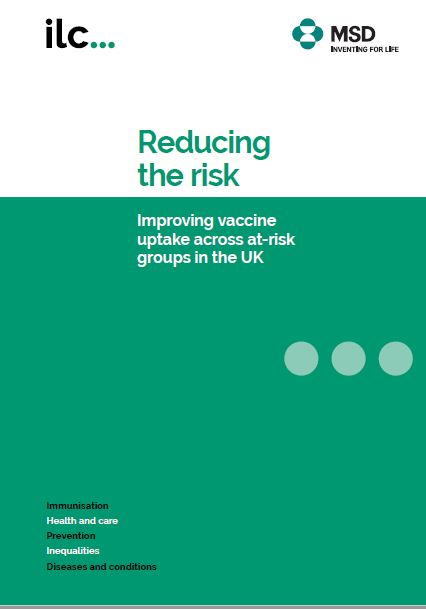Reducing the risk: Improving vaccine uptake across at-risk groups in the UK

Reducing the risk: Improving vaccine uptake across at-risk groups in the UK
The COVID-19 pandemic is a stark reminder of the importance of immunisation in preventing disease outbreaks and protecting public health. In particular, safeguarding the most clinically vulnerable from COVID-19 has become a crucial priority.
Yet while COVID-19 vaccine uptake has been high in clinical risk – or “at-risk” – groups, uptake for other routine vaccinations remains low. For example, only around half (53%) of at-risk people in England received the flu vaccine during the 2020/21 flu season. Uptake for the pneumococcal vaccine was even lower, at just 17% between 2018 and 2020.[1]
As such, finding solutions to increase uptake is vital. Through conversations with at-risk people, condition-focused charities and medical experts, our latest findings highlight the current practices, barriers and potential solutions associated with routine vaccination. Our research has found a number of factors that contribute to low uptake, including:
- Communication barriers, such as misinformation, inaccessible information and inconsistent messaging
- Structural barriers, due to a lack of trust in public organisations and fear of stigma and discrimination from healthcare providers
- Personal factors, such as needle phobias, conflicts with individual choices, time constraints, medical pressures and age
- Accessibility issues, such as physical and geographical barriers, inflexibility of appointments and a lack of vaccine supplies
To overcome these barriers, we’ve identified three key opportunities to help improve vaccination uptake in at-risk people:
- Improved vaccination communications and information, such as targeted communications and personalised messaging
- Closer collaborations and partnerships between charities, community leaders, public health groups and pharmacies
- Easier access to vaccination through innovative solutions and better signposting to vaccine locations
These discussions have informed our final report, as well as a good practice guide aimed at equipping charities with ideas on how to encourage routine vaccination.
This project has been commissioned by MSD.
Author: Patrick Swain
Notes
1. Pneumococcal vaccine data includes the proportion of adults aged 2 to 64 years who were newly identified as being at-risk between 1 April 2018 and 31 March 2019, and received a vaccine between 1 April 2018 and 31 March 2020. Cumulative pneumococcal vaccine uptake as a proportion of adults aged 2 to 64 years at risk anytime up to 31 March 2020 is 42%.

